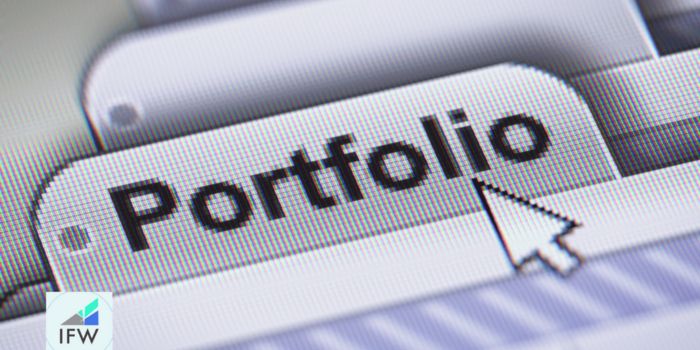Do you dream of a worry-free retirement with a simple yet effective investment portfolio that generates income and grows over time? If so, you’re in the right place! This comprehensive guide will walk you through the essentials of building and maintaining a retirement portfolio that combines simplicity and effectiveness, enabling you to enjoy the fruits of your labor without the stress and complexity often associated with investing.
Key Takeaways
- Retirement portfolios are collections of investments that can be strategically managed to provide financial security.
- Mutual funds and index funds offer diversification, professional management, and access to broad arrays of investments for retirement portfolios.
- Building a diversified portfolio includes dividend-paying stocks, fixed-income investments, and money market mutual funds tailored to risk tolerance and goals. Regular rebalancing is essential for maintenance.
Understanding Retirement Portfolios

A retirement portfolio is a collection of various investments specifically designed to provide income and growth during your golden years. By carefully selecting and managing these investments, you can ensure a comfortable and financially secure retirement.
Let’s dive deeper into the building blocks of retirement portfolios, starting with two popular investment choices: mutual funds and index funds.
Mutual Funds and Index Funds
Mutual funds and index funds are investment vehicles that pool investors’ capital to purchase a diversified portfolio of stocks, bonds, or other securities. Mutual funds are managed by professional fund managers who make active investment decisions, while index funds are passively managed, adhering to a specific index, such as the S&P 500. The advantages of investing in these funds include diversification, professional management, and access to a broad array of investments, making them highly suitable for retirement portfolios.
Some examples of mutual funds include the Vanguard 500 Index Fund and the Fidelity Select Funds, while the S&P 500 Index Fund and the Nasdaq-100 Index Fund are notable index funds. Including these funds in your retirement planning can provide a strong foundation for growth and income, setting you on the path to financial success.
Asset Allocation
Asset allocation is the process of dividing your investment portfolio among various asset classes, such as stocks, bonds, and cash investments. A well-thought-out asset allocation strategy is crucial for balancing risk and reward in your retirement portfolio, ensuring that you receive both income and growth while preserving your capital. It is generally recommended to include a mix of stocks, bonds, and cash investments that will generate retirement income and future growth, tailored to your specific risk tolerance and financial goals.
As you approach retirement, it’s essential to prioritize capital preservation and income generation. Certificates of deposit (CDs), Treasury securities, and fixed and indexed annuities can help you reach your financial goals. They provide a reliable investment vehicle and can offer protection from volatility. By adjusting your asset allocation over time, you can ensure that your retirement portfolio remains aligned with your changing needs and financial objectives.
Building a Diversified Retirement Portfolio

Diversification is key to building a diversified investment portfolio for retirement that can weather market fluctuations and provide a stable source of income. To achieve this, your retirement portfolio should include a mix of dividend-paying stocks, fixed-income investments, and money market mutual funds.
Let’s explore each of these components in more detail.
Dividend Paying Stocks
Dividend-paying stocks are shares of companies that distribute a portion of their profits to shareholders in the form of dividends. These stocks can provide a valuable source of income during retirement, as well as potential for capital appreciation. Dividend funds, which focus on stocks with higher dividend yields, aim to offer investors appealing income prospects. Companies that issue dividends are typically regarded as mature and stable, boasting a track record of consistent distributions.
By including dividend-paying stocks in your retirement portfolio, you can enjoy a steady stream of income while also benefiting from the potential growth of your investments. This dual advantage makes dividend-paying stocks a crucial component of a well-diversified retirement portfolio.
Fixed Income Investments
Fixed-income investments, such as bonds, play a vital role in providing stability and income generation within your retirement portfolio. These investments offer a fixed return over a predetermined period of time and generally pay interest or dividends at regular intervals. Examples of fixed-income investments include corporate bonds, government bonds, certificates of deposit (CDs), and Treasury bills.
By incorporating fixed-income investments into your retirement portfolio, you can complement the growth potential of stocks with the security and income generation offered by bonds and other fixed-income securities. This balanced approach can help you achieve your financial goals while minimizing risk.
Money Market Mutual Funds
Money market mutual funds are a type of mutual fund that:
- Invests in short-term, high-quality securities
- Offers high liquidity and lower risk compared to other investments
- Provides an excellent way to preserve capital and maintain liquidity within your retirement portfolio, acting as a cash reserve
- Can also offer higher yields than traditional savings accounts, making them an attractive option for those seeking low-risk investment options.
Some examples of money market mutual funds include the Vanguard Prime Money Market Fund, the Fidelity Cash Reserves Fund, and the Schwab Value Advantage Money Fund. By including money market mutual funds in your retirement portfolio, you can ensure that your investments remain diversified across a range of asset classes, further reducing risk and enhancing the stability of your portfolio.
Risk Tolerance and Investment Strategy

When selecting funds for your retirement portfolio, it’s essential to consider your risk tolerance and investment strategy. These factors will influence your choice of actively managed vs. passive funds, as well as your decision to invest in target retirement funds.
Let’s examine these options more closely.
Actively Managed Funds vs. Passive Funds
Actively managed funds:
- Managed by professional fund managers
- Actively make investment decisions
- Aim to achieve superior returns compared to the market
- Typically come with higher fees, including transaction fees
While these funds may offer the potential for higher returns, it’s important to consider the associated fees.
On the other hand, passive funds track market indexes, such as the S&P 500, and generally have lower fees. The choice between actively managed and passive funds ultimately depends on your risk tolerance, investment strategy, and financial goals. Actively managed funds may be more suitable for aggressive investors seeking higher returns, while passive funds might be a better fit for conservative investors focused on minimizing fees and tracking market performance.
Target Retirement Funds
Target retirement funds are designed to provide a diversified portfolio of investments tailored to a specific retirement date. These funds automatically adjust their asset allocation over time, becoming more conservative as the target date approaches. This means that the fund will invest more heavily in stocks when the investor is younger and transition to more conservative investments, such as bonds and cash, as the investor nears retirement.
Popular providers of target retirement funds include Vanguard and Fidelity. These funds offer a convenient and diversified investment solution for retirement savings, eliminating the need for investors to rebalance their portfolios or adjust their asset allocation manually. By incorporating target retirement funds into your retirement portfolio, you can simplify your investment strategy and focus on enjoying your retirement years.
Retirement Savings Vehicles

In addition to selecting the right investments for your retirement portfolio, it’s crucial to consider the type of accounts you’ll use to hold those investments. Utilizing tax-deferred and taxable accounts can help maximize tax efficiency and investment growth, ensuring that you make the most of your retirement savings.
Tax-Deferred Accounts
Tax-deferred accounts, such as traditional Individual Retirement Accounts (IRAs) and 401(k) plans, offer tax benefits that can help you save more for retirement. Contributions, earnings, and gains within these accounts are not taxed until you withdraw the funds, allowing your investments to grow tax-free over time. Examples of tax-deferred accounts include traditional IRAs and 401(k) plans.
Given their tax advantages, tax-deferred accounts should be a priority for retirement savings. By maximizing contributions to these accounts, you can enjoy the benefits of tax-free growth and potentially lower your overall tax burden in retirement.
Taxable Accounts
Taxable accounts, on the other hand, are investment accounts that do not offer tax-sheltered growth. Income and gains earned in these accounts are subject to taxation, but they can still be used for retirement savings with a focus on tax-efficient investments. For example, you can invest in low-turnover stock funds that minimize taxable capital gains distributions or in municipal bonds that generate tax-free interest income.
By utilizing both tax-deferred and taxable accounts for your retirement savings, you can create a well-rounded and tax-efficient investment strategy that maximizes growth while minimizing taxes. This balanced approach can help ensure that you make the most of your retirement savings and enjoy a comfortable and financially secure retirement.
Adjusting Your Retirement Portfolio Over Time

As you progress through your investment journey, it’s essential to adjust your retirement portfolio over time to ensure it remains aligned with your changing needs and financial objectives. This involves shifting from growth-oriented investments to income-generating assets and regularly rebalancing the portfolio.
Let’s explore these adjustments in more detail.
Shifting from Growth to Income
As retirement nears, it’s crucial to gradually shift your focus from growth investments, such as stocks, to income-producing assets like bonds and dividend-paying stocks. This transition can help you generate a consistent income stream to cover daily living costs in retirement while also safeguarding your capital, as income-producing assets typically have less volatility than growth investments.
To successfully shift from growth to income, consider the following steps:
- Diversify your income-producing assets to mitigate risk.
- Adjust your investment portfolio based on your risk tolerance and time horizon.
- Transition your investment strategy over time to ensure that your retirement portfolio remains aligned with your evolving needs and financial goals.
Rebalancing and Portfolio Maintenance
Regular rebalancing and portfolio maintenance are essential for ensuring that your retirement portfolio remains aligned with your risk tolerance and financial goals. Rebalancing involves periodically adjusting the asset allocation of your portfolio to maintain your desired risk/return profile, while portfolio maintenance involves monitoring the performance of your investments and making necessary adjustments.
To effectively rebalance and maintain your portfolio, consider implementing the following strategies:
- Schedule regular rebalancing to ensure your portfolio stays aligned with your investment goals.
- Use dollar-cost averaging, which involves investing a fixed amount at regular intervals, to mitigate the impact of market fluctuations.
- Avoid frequent trading, as it can lead to unnecessary transaction costs and potentially harm your long-term returns.
By consistently monitoring and adjusting your retirement portfolio using these strategies, you can enhance its performance and reduce risk over time, setting yourself up for a successful and financially secure retirement.
Trust The Institute of Financial Wellness For A Comfortable Retirement

The Institute of Financial Wellness provides a comprehensive suite of financial education, resources, and services designed to help investors build and maintain successful retirement portfolios. By utilizing the Institute’s resources and guidance, you can make informed decisions about your retirement investments, gain access to valuable tools and services, and ultimately achieve your financial goals.
The Institute of Financial Wellness is your trusted partner on the path to a comfortable and secure retirement, providing guidance in personal finance.
Full Summary
Building a simple yet effective retirement portfolio is achievable by understanding the key components of retirement portfolios, diversifying your investments, and adjusting your portfolio over time.
By considering your risk tolerance and investment strategy and utilizing appropriate retirement savings vehicles, you can create a retirement portfolio that generates income and grows over time. With the guidance and resources provided by the Institute of Financial Wellness, you can confidently embark on your journey to financial success and enjoy a worry-free retirement.
Frequently Asked Questions
What is a good portfolio for retirement?
For retirement, advisors typically suggest an allocation of stocks, bonds, and cash in proportions of 40-50%, 50-60%, or 60-70% respectively, depending on your age.
Equity income funds, balanced funds, fixed income funds, and mutual/index funds are all potential investments that could form part of a retirement portfolio designed to generate steady income and preserve capital.
Is $10 million enough to retire at 60?
$10 million is generally enough to provide a comfortable retirement, depending on your spending habits and life expectancy.
However, it’s important to factor in both expected and unexpected expenses when deciding if $10 million will be sufficient.
What is the 3% rule in retirement?
The Three Percent Rule is a general guideline for retirees to follow when deciding how much to withdraw from their portfolio in retirement. This rule suggests taking 3% or less annually to help ensure the money lasts throughout retirement and won’t run out prematurely.
What is the average retirement portfolio amount?
The average retirement portfolio amount is approximately $141,542, as reported by Vanguard in their “How America Saves 2022” report.
However, the median 401(k) balance is just $35,345, and this figure varies widely according to age group.
Should a retired person invest in mutual funds?
Mutual funds can be an excellent option for retirees who can handle the risk. However, it’s essential to make sure that they have enough funds to cover any potential losses.
Short-term bonds and money market mutual funds are also good options for those looking for regular income payments.




